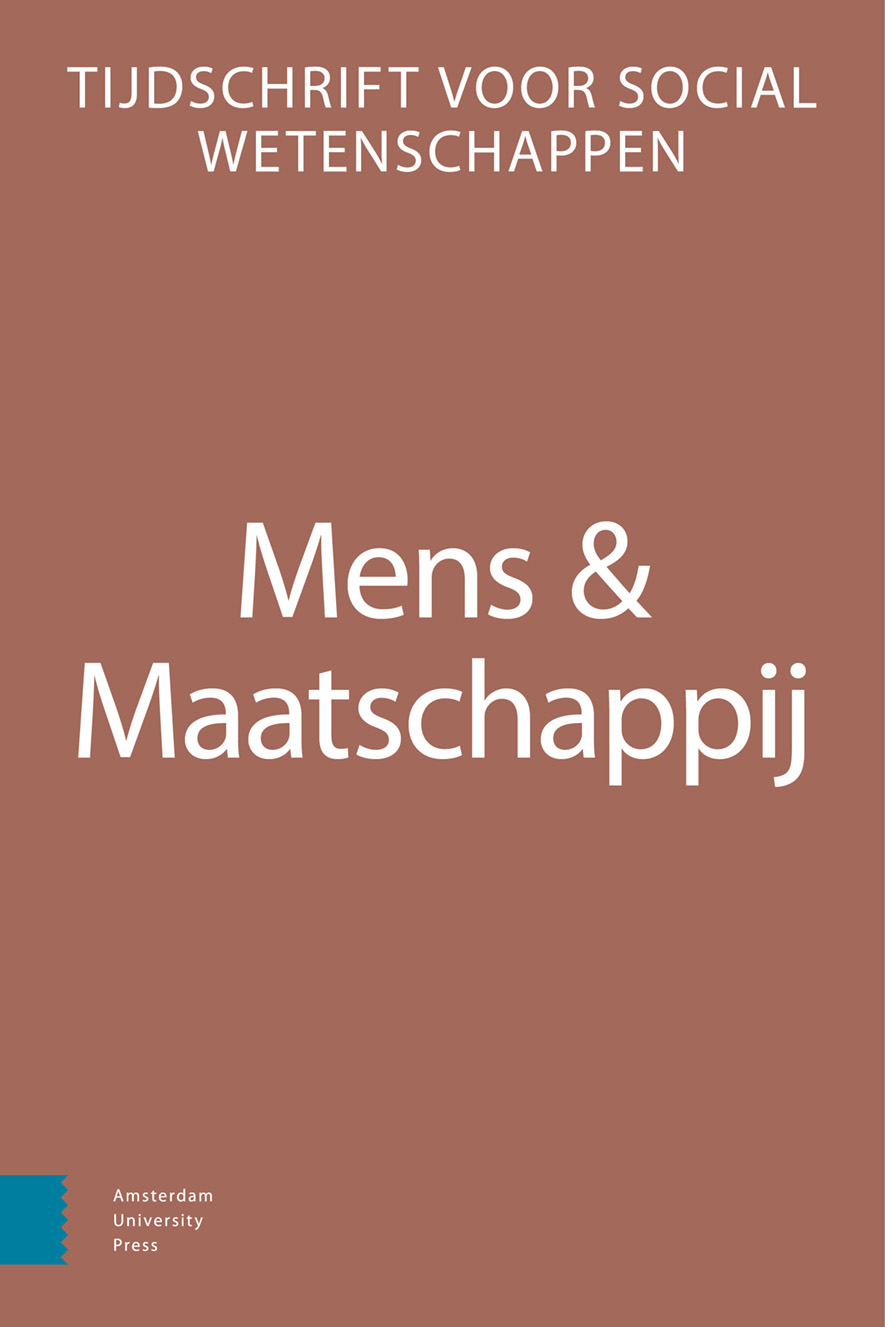- Home
- A-Z Publications
- Mens & Maatschappij
- Previous Issues
- Volume 91, Issue 1, 2016
Mens & Maatschappij - Volume 91, Issue 1, 2016
Volume 91, Issue 1, 2016
-
-
Immigranten vlak na migratie en de verandering in de houding ten aanzien van homoseksualiteit
More LessAuthors: Dirk-Jan Janssen & Marcel LubbersSummaryImmigrants right after migration and the change in attitude towards homosexuality
In this study we investigate the changes in the attitude towards homosexuality among immigrants to the Netherlands in the first years after migration. We test possible explanations for an attitude change related to dynamics in integration in the Netherlands: the extent to which social contact, media use and church attendance are associated to changes in attitudes towards homosexuality. We used the NORFACE funded Dutch panel data ‘Causes and Consequences of Social and Cultural Integration Process among recent immigrants to Europe’ (SCIP). Bulgarian, Polish, Moroccan, Turkish, Antillean and Surinamese immigrants are included in this study. An unexpected finding is that recent immigrants generally became more negative regarding homosexuality during their stay in the Netherlands. There is quite some between- and within-migrant group variation: the Bulgarians have become more positive in contrast to the other migrant groups. Watching Dutch television and a decline in church attendance have a positive effect on the change in attitude towards homosexuality. The increase in church attendance can explain why immigrants, in general, became more negative. No support was found for the expected impact of changes in social contact.
-
-
-
PVV en SP: ideologische tegenstanders met dezelfde voedingsbodem?
More LessAuthors: Ilva Veul, Andreas Flache & Simon VenemaSummaryPVV and SP: ideological adversaries, but the same breeding ground? The effects of municipal factors on electoral support for a right-wing and a left-wing populist party across 403 Dutch municipalities in 2010
The right-wing PVV and the left-wing SP are seen as populist parties who are fierce ideological adversaries in the Dutch political spectrum. We study the similarities and differences in municipal contexts that explain their electoral success. Results of the 2010 national elections at the municipality level are analyzed for nearly all (N=403) Dutch municipalities. Hypotheses are formulated based on integrated group threat theory and relative deprivation theory. Results indicate similarities but also clear differences in the contexts in which SP and PVV thrive. PVV is more successful in municipalities with more immigrants and a higher average perception of unsafety, SP thrives more under local socioeconomic deprivation.
-
-
-
Soort zoekt soort
More LessAuthors: Frederik Van der Gucht & Raf VanderstraetenSummaryThe uneven geographical distribution of university graduates in Belgium, 1970-2011
University education in Belgium expanded rapidly in the second half of the twentieth century. However, the geographical distribution of university trained human capital has remained unequal. In this paper, we focus on the historical evolution of the geographical segregation of university graduates during a period of four decades (1970-2011). Our analyses show that Belgium’s major universities have come to operate as attractors for university graduates; the regions around these universities have become brain hubs. But the regions where university graduates want to live do not always coincide with the regions where they find appropriate employment opportunities. Our findings show that university regions are able to attract highly schooled human capital despite a lack of appropriate employment opportunities.
-
-
-
Sprekende voorbeelden
More LessAuthors: Manfred te Grotenhuis, Amber Walraven & Nico van de MortelSummaryLiving examples: the positive effect of instructional videos on physics tests in Dutch pre-university classes
Aim of this study is to measure the effect of instructional videos on physics tests, taken in the highest classes of Dutch pre-university education (vwo 5 and 6) in 2014. The students (aged between 17 and 19) were randomly assigned to experimental and control groups. In a first trial, the control group used a textbook to prepare for a physics test, while the experimental group watched instructional videos on YouTube. In a second trial, the control group watched the videos and the experimental group used the textbook to prepare for a second physics test. In this research design, both between and within group comparisons of the test results have been made. Each and every comparison indicated a significant and relevant positive effect: if instead of a textbook, videos were used for preparation, the percentage of correct answers improved with 10.5 points [90% CI 7.5 – 13.5] and the average percentile score increased with 24 points [90% CI 17 – 30], with an overall effect size (Cohen’s D) of 0.9. This indicates a strong positive influence on tests results when short instructional videos are being used in class.
-
Volumes & issues
Most Read This Month


